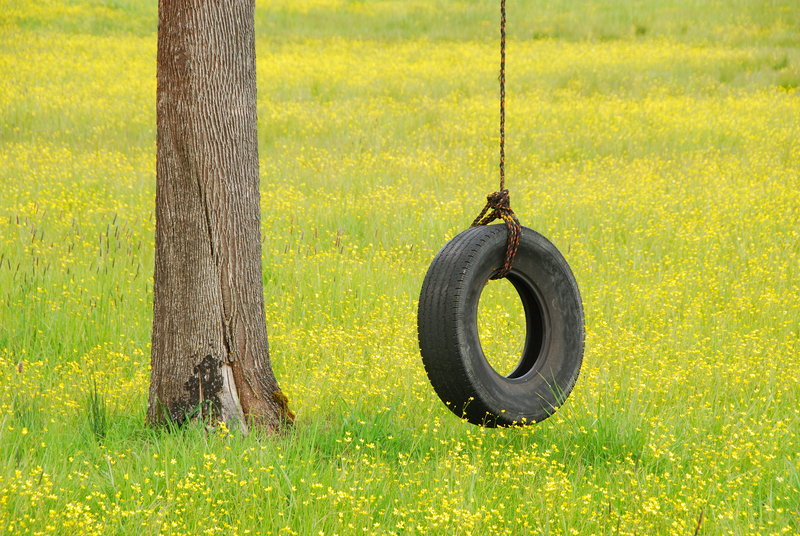Clever PPE Disposal Tips for Families and Workplaces
As the world adapts to new health norms, personal protective equipment (PPE) like masks, gloves, and face shields have become an everyday essential for both families and workplaces. But with increased use comes the inevitable question: What is the smartest way to dispose of used PPE? Proper PPE disposal not only helps safeguard our environment but also protects our communities from further health risks. In this comprehensive guide, we'll explore clever PPE disposal tips, eco-friendly practices, and effective solutions both families and businesses can adopt.
Why Proper PPE Disposal Matters
The surge in single-use PPE has had unintended side effects. Improper disposal can spread germs, endanger sanitation workers, and pollute our surroundings. Whether at home or in the workplace, clever PPE disposal is a public responsibility we all share. Understanding safe, environmentally-conscious ways to discard masks, gloves, and other PPE helps reduce risk and reassures everyone who visits your space.
- Health and hygiene: Incorrect disposal can retain contaminants and spread infection.
- Environmental concerns: Most PPE is made of plastics and synthetic fibers that do not biodegrade easily.
- Wildlife safety: Discarded PPE can entangle animals or be mistaken for food.

Understanding PPE Types and Their Disposal Challenges
Before diving into clever disposal solutions, it's important to know the common types of PPE used in homes and businesses. Each has unique challenges:
- Masks (surgical, cloth, N95): Many masks contain plastic fibers and filters that are not biodegradable.
- Gloves (latex, nitrile, vinyl): Disposable gloves are often contaminated and can clog waste management facilities.
- Face shields and goggles: Made mostly from plastic, often with foam headbands.
- Disposable gowns and coveralls: Used by healthcare workers and in certain industries, these can be a hazardous waste issue.
Understanding these materials is fundamental for families and employers seeking effective PPE disposal options.
Clever PPE Disposal Tips for Every Family
1. Segregate PPE Waste from Household Trash
Create a designated, lined bin only for used PPE at your home's entrance or in a convenient room. Keeping PPE separate from general waste:
- Reduces contamination of other recyclables and food waste.
- Makes collection and disposal easier and safer, especially for households with elderly or immunocompromised members.
2. How to Safely Remove and Bag Used PPE
When discarding masks or gloves:
- Do not touch the front of the mask or outside of gloves. Remove using ear loops or wrist area.
- Dispose directly into the PPE bin.
- Seal the bin bag tightly when full and consider double-bagging to minimize risks.
Bonus tip: If someone in your household is sick, double-bag PPE and wait 72 hours before putting it out for collection.
3. Avoid Flushing PPE Down the Toilet
This tip may be obvious, but it's regularly overlooked. Flushing PPE can block drains, damage treatment plants, and allow plastic to enter waterways. Always use a bin, never the toilet or sink.
4. Encourage Reusable PPE Where Safe
Cloth masks and washable gowns are practical alternatives to single-use PPE. Clean these items in a hot wash, separate from other clothes, and dry thoroughly before reuse.
5. Involve Kids in Responsible PPE Disposal
Make clever PPE disposal a fun learning process. Use color-coded bins, creative posters, or reward charts to help children remember the importance of safe practices. Teaching by example ensures lifelong habits.
PPE Disposal Best Practices for Workplaces
1. Install Clearly Marked Disposal Stations
Position labeled PPE disposal bins at all entry/exit points, in break rooms, and near hand-washing stations. This:
- Keeps PPE waste separate from office or production trash.
- Promotes a strong workplace hygiene culture.
- Makes collection easier for cleaning staff.
2. Use Touch-Free Solutions
Install foot-operated, sensor, or swing-lid disposal units to minimize cross-contamination. Hands-free bins are more hygienic and encourage usage.
3. Provide PPE Disposal Training
Train staff in the correct way to remove and dispose of PPE. Visual guides and brief demonstrations can be extremely effective. Update your workplace policies regularly as regulations change or improve.
4. Schedule Regular Waste Removal
Empty PPE bins daily or more often in high-traffic areas. Document your disposal routines to demonstrate compliance with health and safety regulations.
5. Partner with Specialized PPE Disposal Services
For offices, clinics, or industries producing large PPE volumes, work with certified waste management companies experienced in medical or hazardous waste. These vendors offer collection, transport, and incineration services tailored to your needs.
Eco-Conscious PPE Disposal Ideas
While the focus is on safety, clever PPE disposal can also help the environment. Consider these eco-friendly tips:
- Choose biodegradable or compostable PPE: Increasingly, companies offer masks, gloves, and coveralls made from plant-based or biodegradable materials. Check product labeling before purchase.
- Look for recycling programs: Some regions now have specialty PPE recycling, turning old masks and gloves into construction materials or energy. Research local programs and encourage community participation.
- Participate in PPE upcycling drives: Some nonprofits collect clean, unused PPE surplus for donation or innovative reuse.
Repurposing and Upcycling PPE at Home
Creative families have found ways to upcycle unused PPE:
- Masks: Turn old masks into potholder liners or use for craft projects after thorough hot washing.
- Plastic face shields: Can be cut into bookmarks, plant tags, or art supplies.
- Elastic ties or bands: Saved from masks, these make great craft or home organization tools.
Always ensure that PPE being upcycled is free of contaminants and has been properly sanitized.
What NOT to Do: PPE Disposal Mistakes to Avoid
- Never place used PPE in recycling: Standard recycling cannot process used masks, gloves, or shields and they may endanger workers.
- Don't scatter PPE in public bins: Always bag disposables to prevent wind or animals spreading contamination.
- Avoid burning PPE at home: Burning plastics releases toxic fumes harmful to health and the environment.
- Don't compost synthetic PPE: Only compost certified natural-fiber masks or gloves, as most contain plastics.
Legal and Regulatory Considerations
In workplaces, especially healthcare, there are specific regulations for hazardous waste:
- Follow OSHA guidelines on handling and disposing of contaminated PPE in the United States.
- Check your local authority's rules on double-bagging, labeling, and collection frequencies.
- For hazardous waste, use only approved yellow bags or bins as required by law.
Consult your local public health or environmental protection agency for updates in your area.
Clever PPE Disposal Tips Roundup
- Use clearly marked, lined bins both at home and at work.
- Double-bag and seal if there's any risk of contamination.
- Never flush or burn PPE; always dispose of it with care.
- Encourage reusable masks and shields where safe.
- Incorporate children and staff into your disposal plan with education and visual cues.
- Seek eco-friendly PPE products and participate in community recycling or upcycling initiatives.

The Future of PPE Disposal: Innovative Solutions
Researchers worldwide are tackling the PPE waste problem through smart ideas:
- Biodegradable PPE: Masks and gloves made of corn starch, hemp, or bamboo fibers.
- UV and microwave sterilization: Allowing some PPE to be safely reused.
- Plastic-to-fuel technologies: Turning used PPE into energy in specialized plants.
As these inventions become mainstream, clever PPE disposal will become easier, more sustainable, and better for our planet.
Conclusion: Make PPE Disposal a Clever Habit
Adopting clever PPE disposal habits is about more than following the rules--it keeps families, workers, and communities safe. Whether you're managing PPE at your front door or throughout a busy workplace, simple practices make a meaningful difference. Remember to separate, secure, and, where possible, recycle or repurpose your protective equipment. With a proactive approach, every family and business can play a part in building a safer, cleaner future.
Share these clever tips with your loved ones and coworkers--and help make responsible PPE disposal a community standard.
Frequently Asked Questions: PPE Disposal
-
Can PPE be recycled?
Most disposable PPE cannot be recycled through curbside programs. Search for local specialty recyclers or contact your municipality. -
How can I reduce PPE waste at home?
Use reusable gear when safe, purchase only what's needed, and upcycle clean surplus items. -
What to do if my workplace has no PPE disposal bins?
Notify facility management. Temporary lined containers can work until permanent solutions are installed. -
Is PPE disposal different for COVID-19?
During active infection, double-bagging and waiting 72 hours before waste removal are advised. Check your local guidelines.
For further advice, consult your local health department or environmental agency to stay updated on clever PPE disposal practices tailored to your community.
